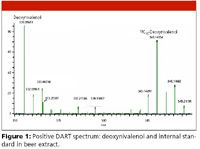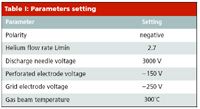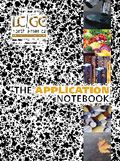Analysis of Deoxynivalenol in Beer
The Application Notebook
Mycotoxins, toxic secondary metabolites of several fungal species, represent food safety issues of high concern. Deoxynivalenol, the most abundant trichothecene mycotoxin, can be found worldwide as a contaminant of wheat, barley, maize and other cereals (1,2). The transmission of deoxynivalenol from barley into beer has been reported in several studies (3,4). Therefore, its levels should be controlled.
Mycotoxins, toxic secondary metabolites of several fungal species, represent food safety issues of high concern. Deoxynivalenol, the most abundant trichothecene mycotoxin, can be found worldwide as a contaminant of wheat, barley, maize and other cereals (1,2). The transmission of deoxynivalenol from barley into beer has been reported in several studies (3,4). Therefore, its levels should be controlled.

Figure 1
Experimental Conditions
The AccuTOF™ -LC time-of-flight mass spectrometer equipped with a DART™ ion source and AutoDart HTC PAL autosampler, was used for examination of beer in this study. A Donprep® immunoaffinity column (R-Biopharm) was employed for selective isolation of target analyte from the sample. Briefly, 10 mL of beer with added internal standard (13 C15-deoxynivalenol, 500 ng/ml) was passed through the cartridge, which was then washed with 5 mL of water. Deoxynivalenol was subsequently eluted with 4.5 mL of methanol. Calibration standards containing deoxynivalenol in the range from 100 to 1500 ng/mL and fixed amount of internal standard (500 ng/mL) were prepared for quantification.
Introduction of the sample (n = 5) into the gas beam was carried out automatically with the use of an autosampler. Beer extract was placed in the sampling hole, a Dip-it™ sampler stick was immersed into the sample and introduced in front of the DART ion source. After each sample analysis, PEG mixture solution was injected for mass drift compensation.

Table I: Parameters setting
To enhance negative ionization of target analytes, a vial containing methylene chloride was placed beneath the DART gun exit - MS orifice axis. After sample introduction, both deoxynivalenol and 13 C15-deoxynivalenol were immediately detected as [M+Cl] under parameters settings shown in Table I. Good mass accuracy was obtained.
Results and Conclusions
A calibration plot of deoxynivalenol showed the analyte to internal standard ratio was linear in the selected concentration range. Deoxynivalenol concentration determined with the use of DART-TOFMS in this particular beer sample was 166 μg/L and repeatability of the method, estimated from five repetitive analyses, was 3%. In addition, accredited LC–MS-MS method was used for sample examination to confirm the validity of results obtained by DART-TOFMS. The difference between deoxynivalenol obtained by respective methods was as low as 14 μg/mL.
References
(1) Hussein, H.S.; Brasel, J.M.: "Toxicity, metabolism, and impact of mycotoxins on humans and animals," Toxicology, 167, 2001, 101–134.
(2) Wiedenbörner, M.: Encyklopedia of food mycotoxins, Springer, Berlin.
(3) Scott, P. M.: "Mycotoxins transmitted into beer from contaminated grains during brewing," Food Chemical Contaminants, 79, 1996, 875–882.
(4) Papadoulou-Bouraoui, A.; Vrabcheva, T.; Valzacchi, S.; Stroka, J.; Anklam, E.: "Screening survey of deoxynivalenol in beer from the European matket by an enzyme-linked immunosorbent assay," Food Additives and Contaminants, 21, 2004, 607–617.

JEOL USA, Inc.
11 Dearborn Rd.
Peabody, MA 01960
tel. (978) 535-5900, fax (978) 536-2205
http://www.jeolusa.com

Analytical Challenges in Measuring Migration from Food Contact Materials
November 2nd 2015Food contact materials contain low molecular weight additives and processing aids which can migrate into foods leading to trace levels of contamination. Food safety is ensured through regulations, comprising compositional controls and migration limits, which present a significant analytical challenge to the food industry to ensure compliance and demonstrate due diligence. Of the various analytical approaches, LC-MS/MS has proved to be an essential tool in monitoring migration of target compounds into foods, and more sophisticated approaches such as LC-high resolution MS (Orbitrap) are being increasingly used for untargeted analysis to monitor non-intentionally added substances. This podcast will provide an overview to this area, illustrated with various applications showing current approaches being employed.

.png&w=3840&q=75)

.png&w=3840&q=75)



.png&w=3840&q=75)



.png&w=3840&q=75)















